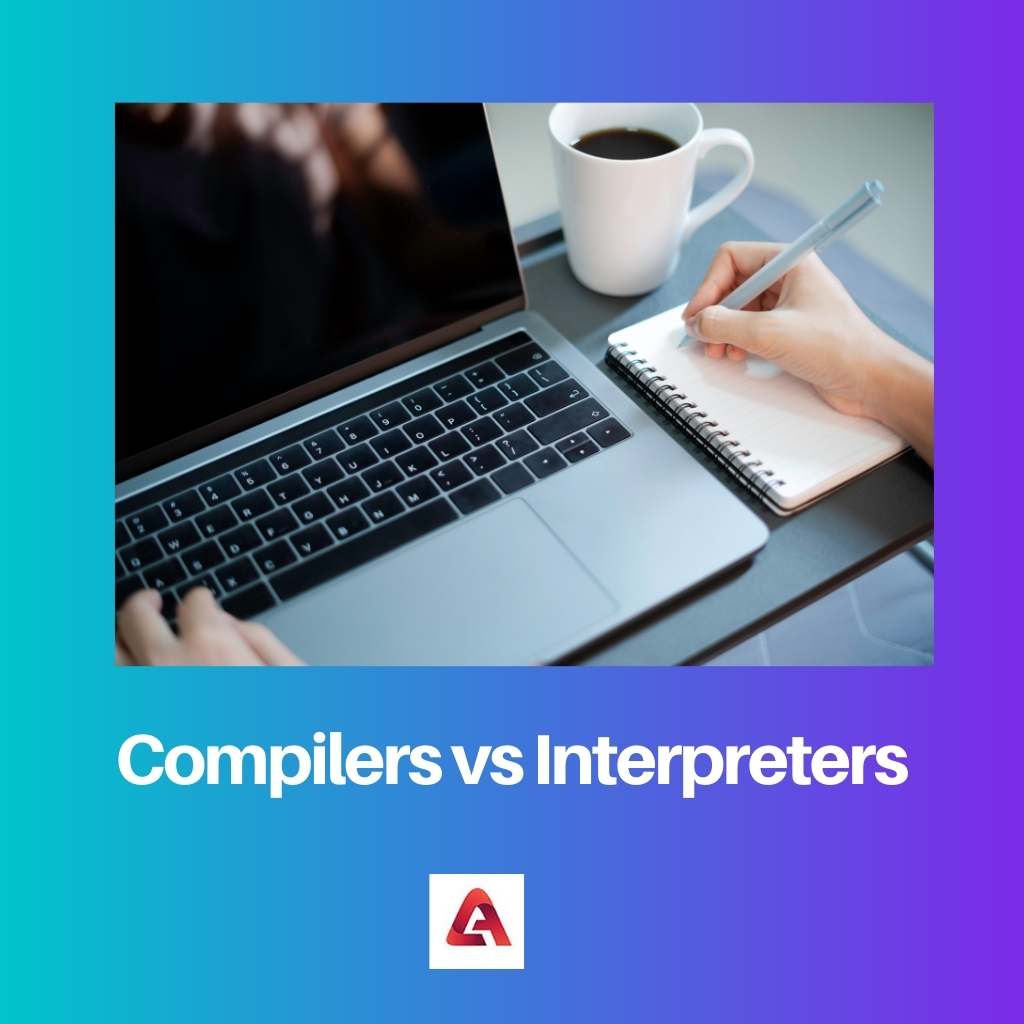Computer systems use binary language. All the inputs given in other complex languages are analyzed using compilers or interpreters and then translated into the language of the system.
Hence, the instructions are executed. The machine code is generated using these. But both work differently. An interpreter is memory efficient but time-consuming.
While compilers are swift enough but need linking and higher memory.
Key Takeaways
- Compilers convert entire source code into machine code before execution, while interpreters execute source code line by line, translating each line into machine code.
- Compiled programs execute faster, while interpreted programs offer better portability and easier debugging.
- Compilers produce standalone executables, while interpreters require the interpreter software to run the program.
Compilers vs Interpreters
Compiling is translating a high-level programming language into machine language, making it faster than interpreted code. An interpreter is a software program that translates code line-by-line as it is being executed, making development faster but slower than compiled code due to constant interpretation.

Compilers read the source code wholly at once and translate it into the machine language. C, C++, and C# are examples of such.
The errors in the source code will be highlighted once after the compiler analyses it. Grace Hopper gave it the name compiler.
They are large programs with many abilities. Compiled programs are efficient. It also protects the source code and related programs.
Interpreters analyze a line at a time and change it into machine language. If an error is found, the interpreter halts the process and restarts only when it is removed.
Therefore, removing bugs is simple. There is no requirement for object code generation. Python, MATLAB, Ruby, and Perl are examples of interpreters.
Comparison Table
| Parameters of Comparison | Compilers | Interpreters |
|---|---|---|
| Functioning | The whole source code is translated into machine language and then executed. | Each line is translated and finally executed. |
| Time | Less time to execute | Requires more time |
| Error detection | Only after the whole source code is analyzed | Stops when an error is detected and resumes when it is corrected |
| Generation of object code | Present | Absent |
| Examples | C, C++, C# | Ruby, Python, Perl |
What are Compilers?
A compiler translates the high-level language into the language of the processing unit. The system uses object code. Therefore, all the inputs must be translated into their language.
This is where a compiler comes into action. It converts the received source code to the computer’s programming language. A computer uses binary language to operate.
So the instructions should be in the same language.
The process is known as compilation. It has multiple steps. Starting from analysis, where the compiler understands the source code to convert it and acting is a rapid process.
In analysis, there are three sub-steps: initially, the collective meaning is formed using linear analysis.
Secondly, the hierarchical analysis to divides the collective meaning groups called tokens, and finally, the semantic analysis assures that the source code has a meaning.
There is a structure for the compilation process. The lexical analyzer step involves the source code and scans it thoroughly to find the mistakes.
Then the syntax analyzer uses the input received from the lexical analyzer to check the grammar. Its input is taken by the semantic analyzer that checks the validity of the code.
In the next phase, intermediate code is generated, which is optimized by a code optimizer. Thus, the target code is generated.
Three types of compilers are there. This classification is based on a broader sense. Single-pass compilers translate the source code into machine code directly.
A two-pass compiler has two sections called the front end and back end. The final type is a multi-pass compiler that processes the input language multiple times.
Cross compilers, threaded code compilers, just-in-time compilers, load-and-go compilers, and incremental compilers are some other types of compilers.
What are Interpreters?
Interpreters change the source code into a comprehensible language by going through one statement at a time. It does not generate the object code.
The intermediate form generated by the interpreter is directly executed. It helps programmers to analyze each line without much time.
The source code is not changed into an object code, making interpreters resourceful. The interpreter uses certain strategies to perform its functions.
It may syntactically analyze the input language like the Lisp programming language, translate it to an intermediate representation as Python, or carry out the instruction derived from the precompiled code in the system like UCSD Pascal.
Either of the three strategies are used. The programs are inserted before, and the interpreter is linked to execute the functions. Some systems combine two strategies to perform functions like Java.
Interpreting systems can do translation jobs similar to compilers. There are different types of interpreters. Bytecode interpreters convert source code into bytecode and execute it.
Threaded code interpreters make use of pointers. Self-interpreters interpret themselves. Abstract syntax tree interpreters change the source code to AST and execute.
Main Differences Between Compilers and Interpreters
- Compilers are less time-consuming than interpreters.
- Compilers generate object code. It is absent in interpreters.
- Information regarding errors is given at last in the analysis in compilers. Whereas in interpreters, if an error is found, it stops the process. Thus, it is easier to detect errors in interpreters than in compilers.
- Source code is required for later execution in compilers. Interpreters do not require that.
- Compilers translate the whole source code at once, but interpreters take a line at a time for translation.
- https://books.google.com/books?hl=en&lr=&id=obI0AAAAQBAJ&oi=fnd&pg=PT4&dq=compiler+&ots=-p9sB7XZzQ&sig=6O7rNokygw1dA9aDxK5wiVsEZAU
- https://dl.acm.org/doi/abs/10.1145/800194.805852